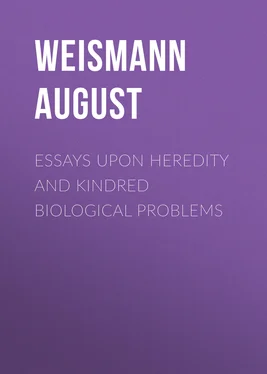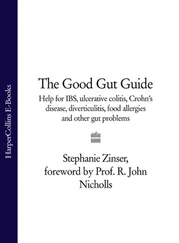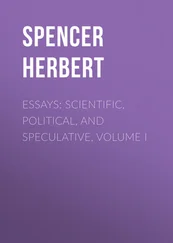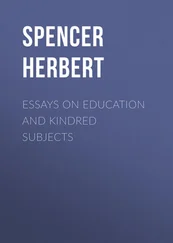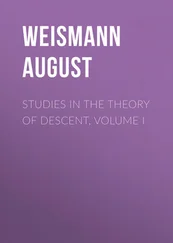August Weismann - Essays Upon Heredity and Kindred Biological Problems
Здесь есть возможность читать онлайн «August Weismann - Essays Upon Heredity and Kindred Biological Problems» — ознакомительный отрывок электронной книги совершенно бесплатно, а после прочтения отрывка купить полную версию. В некоторых случаях можно слушать аудио, скачать через торрент в формате fb2 и присутствует краткое содержание. Жанр: foreign_antique, Биология, на английском языке. Описание произведения, (предисловие) а так же отзывы посетителей доступны на портале библиотеки ЛибКат.
- Название:Essays Upon Heredity and Kindred Biological Problems
- Автор:
- Жанр:
- Год:неизвестен
- ISBN:нет данных
- Рейтинг книги:5 / 5. Голосов: 1
-
Избранное:Добавить в избранное
- Отзывы:
-
Ваша оценка:
- 100
- 1
- 2
- 3
- 4
- 5
Essays Upon Heredity and Kindred Biological Problems: краткое содержание, описание и аннотация
Предлагаем к чтению аннотацию, описание, краткое содержание или предисловие (зависит от того, что написал сам автор книги «Essays Upon Heredity and Kindred Biological Problems»). Если вы не нашли необходимую информацию о книге — напишите в комментариях, мы постараемся отыскать её.
Essays Upon Heredity and Kindred Biological Problems — читать онлайн ознакомительный отрывок
Ниже представлен текст книги, разбитый по страницам. Система сохранения места последней прочитанной страницы, позволяет с удобством читать онлайн бесплатно книгу «Essays Upon Heredity and Kindred Biological Problems», без необходимости каждый раз заново искать на чём Вы остановились. Поставьте закладку, и сможете в любой момент перейти на страницу, на которой закончили чтение.
Интервал:
Закладка:
It is well known that Darwin has attempted to explain the phenomena of heredity by means of a hypothesis which corresponds to a considerable extent with that just described. If we substitute gemmules for molecules we have the fundamental idea of Darwin’s provisional hypothesis of pangenesis. Particles of an excessively minute size are continually given off from all the cells of the body; these particles collect in the reproductive cells, and hence any change arising in the organism, at any time during its life, is represented in the reproductive cell 40. Darwin believed that he had by this means rendered the transmission of acquired characters intelligible, a conception which he held to be necessary in order to explain the development of species. He himself pointed out that the hypothesis was merely provisional, and that it was only an expression of immediate, and by no means satisfactory knowledge of these phenomena.
It is always dangerous to invoke some entirely new force in order to understand phenomena which cannot be readily explained by the forces which are already known.
I believe that an explanation can in this case be reached by an appeal to known forces, if we suppose that characters acquired (in the true sense of the term) by the parent cannot appear in the course of the development of the offspring, but that all the characters exhibited by the latter are due to primary changes in the germ.
This supposition can obviously be made with regard to the above-mentioned colony with its constituent elements differentiated into somatic and reproductive cells. It is conceivable that the differentiation of the somatic cells was not primarily caused by a change in their own structure, but that it was prepared for by changes in the molecular structure of the reproductive cell from which the colony arose.
The generally received idea assumes that changes in the external conditions can, in connection with natural selection, call forth persistent changes in an organism; and if this view be accepted it must be as true of all Metazoa as it is of unicellular or of homogeneous multicellular organisms. Supposing that the hypothetical colonies, which were at first entirely made up of similar cells, were to gain some advantages, if in the course of development, the molecules of the reproductive cells, from which each colony arose became distributed irregularly in the resulting organism, there would be a tendency towards the perpetuation of such a change, wherever it appeared as the result of individual variability. As a result of this change the colony would no longer remain homogeneous, and its cells would become dissimilar from the first, because of the altered arrangement of the molecules in the reproductive cells. Nothing prevents us from assuming that, at the same time, the nature of a part of the molecule may undergo still further change, for the molecules are by nature complex, and may split up or combine together.
If then the reproductive cells have undergone such changes that they can produce a heterogeneous colony as the result of continual division, it follows that succeeding generations must behave in exactly the same manner, for each of them is developed from a portion of the reproductive cell from which the previous generation arose, and consists of the same reproductive substance as the latter.
From this point of view the exact manner in which we imagine the subsequent differentiation of the colony to be potentially present in the reproductive cell, becomes a matter of comparatively small importance. It may consist in a different molecular arrangement, or in some change of chemical constitution, or it may be due to both these causes combined. The essential point is that the differentiation was originally due to some change in the reproductive cells, just as this change itself produces all the differentiations which appear in the ontogeny of all species at the present day. No one doubts that the reason why this or that form of segmentation takes place, or why this or that species finally appears, is to be found in the ultimate structure of the reproductive cells. And, as a matter of fact, molecular differentiation and grouping, whether present from the beginning or first appearing in the course of development, plays a rôle which can be almost directly observed in certain species. The first segmentation furrow divides the egg of such species into an opaque and a clear half, or, as is often the case among Medusae, into a granular outer layer and a clear central part, corresponding respectively with the ectoderm and endoderm which are formed at a later period. Such early differentiations are only the visible proofs of certain highly complex molecular rearrangements in the cells, and the fact appears to indicate that we cannot be far wrong in maintaining that differentiations which appear in the course of ontogeny depend upon the chemical and physical constitution of the molecules in the reproductive cell.
At the first appearance of the earliest Metazoa alluded to above, only two kinds of cells, somatic and reproductive, arose from the segmentation of the reproductive cell. The reproductive cells thus formed must have possessed exactly the same molecular structure as the mother reproductive cell, and would therefore pass through precisely the same developmental changes. We can easily imagine that all the succeeding stages in the development of the Metazoa have been due to the same causes which were efficient at the earliest period. Variations in the molecular structure of the reproductive cells would continue to appear, and these would be increased and rendered permanent by means of natural selection, when their results, in the alteration of certain cells in the body, were advantageous to the species. The only condition necessary for the transmission of such changes is that a part of the reproductive substance (the germ-plasm) should always remain unchanged during segmentation and the subsequent building up of the body, or in other words, that such unchanged substance should pass into the organism, and after the lapse of a variable period, should reappear as the reproductive cells. Only in this way can we render to some extent intelligible the transmission of those changes which have arisen in the phylogeny of the species; only thus can we imagine the manner in which the first somatic cells gradually developed in numbers and in complexity.
It is only by supposing that these changes arose from molecular alterations in the reproductive cell that we can understand how the reproductive cells of the next generation can originate the same changes in the cells which are developed from them; and it is impossible to imagine any way in which the transmission of changes, produced by the direct action of external forces upon the somatic cells, can be brought about 41.
The difficulty or the impossibility of rendering the transmission of acquired characters intelligible by an appeal to any known force has been often felt, but no one has hitherto attempted to cast doubts upon the very existence of such a form of heredity.
There are two reasons for this: first, observations have been recorded which appear to prove the existence of such transmission; and secondly, it has seemed impossible to do without the supposition of the transmission of acquired characters, because it has always played such an important part in the explanation of the transformation of species.
It is perfectly right to defer an explanation, and to hesitate before we declare a supposed phenomenon to be impossible, because we are unable to refer it to any of the known forces. No one can believe that we are acquainted with all the forces of nature. But, on the other hand, we must use the greatest caution in dealing with unknown forces; and clear and indubitable facts must be brought forward to prove that the supposed phenomena have a real existence, and that their acceptance is unavoidable.
Читать дальшеИнтервал:
Закладка:
Похожие книги на «Essays Upon Heredity and Kindred Biological Problems»
Представляем Вашему вниманию похожие книги на «Essays Upon Heredity and Kindred Biological Problems» списком для выбора. Мы отобрали схожую по названию и смыслу литературу в надежде предоставить читателям больше вариантов отыскать новые, интересные, ещё непрочитанные произведения.
Обсуждение, отзывы о книге «Essays Upon Heredity and Kindred Biological Problems» и просто собственные мнения читателей. Оставьте ваши комментарии, напишите, что Вы думаете о произведении, его смысле или главных героях. Укажите что конкретно понравилось, а что нет, и почему Вы так считаете.
